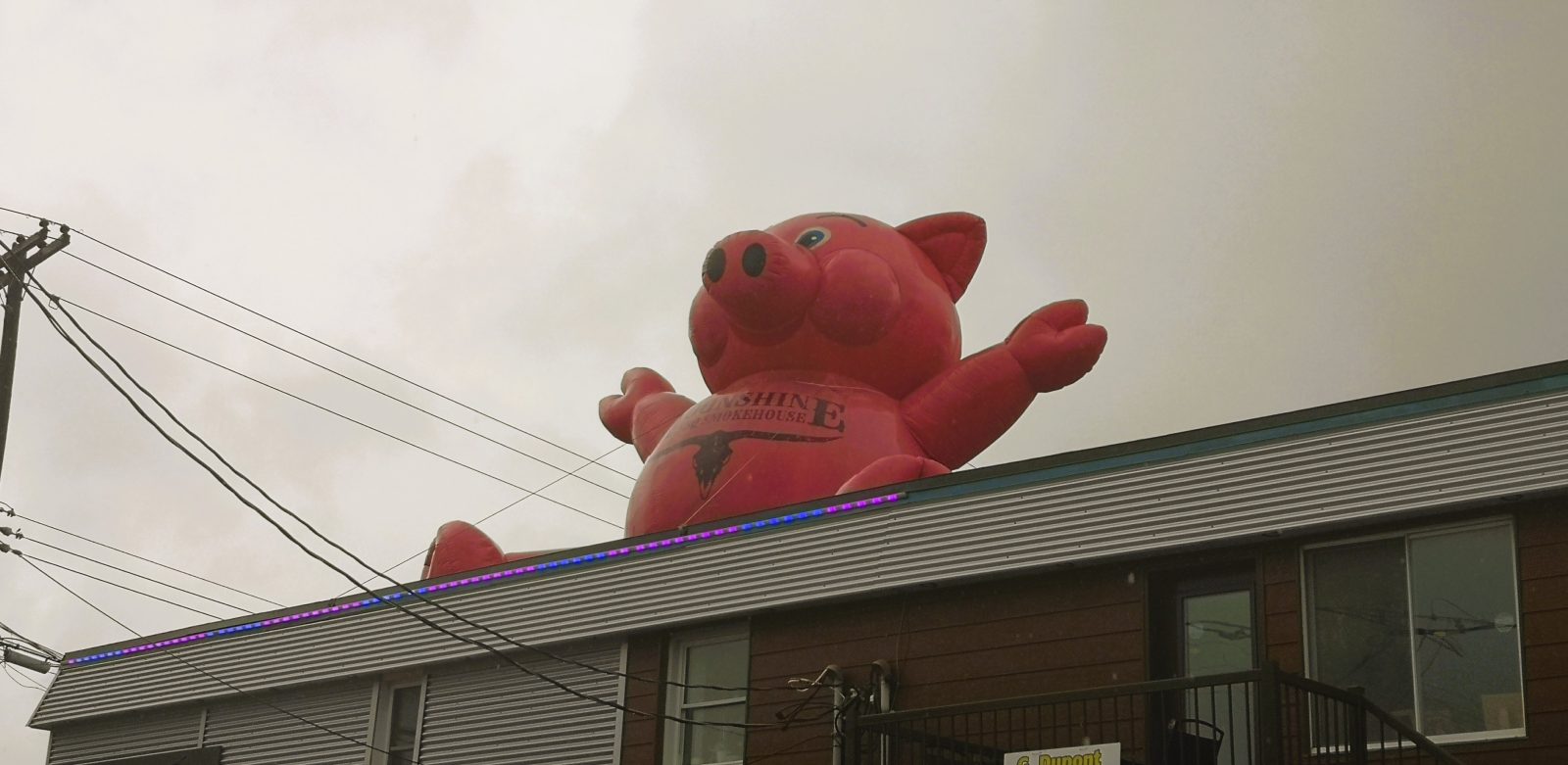With a smoker more than two-metres tall working long hours cooking low and slow in a building adjacent to the restaurant, Moonshine BBQ Smokehouse has been cranking out brisket, ribs pulled pork and pork shank in Hawkesbury for just over five years.
It’s a family business, according to Fred Beaver who oversees day-to-day operations at Moonshine.
“We started this venture sort of dabbling. It’s a love of ours, a hobby. We ended up catering a few weddings for friends and family and demand grew. So, we decided to give a restaurant a whirl. That was six years ago.”
That business model, shall we say, is a tried and true one for barbecue restaurants, in my experience: smoking aficionados start out with a food truck (Moonshine has truck that heads to various area events) that they take to competitions or for catering, and they evolve their expertise into a bricks-and-mortar restaurant.
Today, the Moonshine menu has about 60 items, including upgrades, sides, a kids’ menu and desserts.
You can find the restaurant by looking for the pink pig inflatable that sits on the roof.
Barbacoa in the beginning
There are two aspects to barbecue. Just about everyone has a barbecue in their backyard: either gas or charcoal.
A summertime rite of passage, grilling meats and veg on a barbecue grill is nothing short of a magical food experience, but it usually means cooking relatively quickly and at a high temperature.
Southern U.S.-style barbecue, on the other hand, is low-and-slow cooking in which meats are smoked until tender and infused with flavour.
Abbreviated to “BBQ,” barbecue has a complex history that reaches to the 17th century when Spanish pirates and explorers stole the Taino word “barbacoa” – and a lot more – from this Haitian tribe.
In its earliest form, a barbacoa was a structure of poles erected to cook food. It has evolved in numerous forms from pits dug in the ground to the high-intensity infrared-heat generated in expensive stainless steel boxes we are familiar with today.
Along the way, people in the southern United States – very much driven by descendants of slaves – embraced and perfected the cooking technique that involved wood-fired cooking and smoking of proteins like pork and beef.
It’s a highly regional food: the mustard sauces of the Carolinas, Kansas City-style sauces, Memphis pulled pork sandwiches, Texas brisket, St. Louis-cut pork ribs.
Kansas City meets Quebecois flavours
To that scrumptious variety, we can add the barbecue style that draws on Canadian meats, sourced from local farms, that are on the menu at Moonshine BBQ Smokehouse.
“We basically smoke everything in-house and merge multiple barbecue styles,” says Beaver. “We’ve got Carolina, Memphis and Kansas City barbecue, as well as brisket that is close to Texas style.”
Ingredients and techniques see U.S. style married with Quebecois flavours.
“We do our own in-house rub, which includes some maple salt. It’s Canadian Quebecois kind of, like our traditional maple beans. We have a beautiful mustard sauce, which is similar to Kansas City and Carolina barbecue too.”
To achieve that in part, Moonshine smokes with maple, cherry and hickory – a process that often takes more than 16 hours.
The result is nine appetizers that range from wings and jalapeno poppers to French onion soup and Moonshine’s house-made cheese on their “hill billy” nachos.
There are a few salads and poutines, along with “Classics” that include a hot chicken sandwich, an in-house minced hamburger steak and a Montreal smoked meat.
The rest of the menu pretty much gives itself over to classic barbecue, a section of which is headed up “Meats.” That means smoked chicken, beef and pork – the latter, in its pulled pork form, and a few slices of brisket would count as favourite barbecue dishes for Beaver.
Reading the descriptions of the “Champion 2” and “Champion 4” dishes quickly make sense as shareable aluminum sheet-pan platters for two or four diners. It’s quite a bit of food to eat.
Seeking “perfect” barbecue
Coming out of the uncertainty of the pandemic years had its complications, according to Beaver, but the business made good choices and has been able to weather higher costs.
“We’re lucky we have good, local suppliers and were able to kind of lock in (prices). We also buy a lot of product, so that helped keep things reasonable. I think, particularly in the restaurant industry, you have to kind of go with the swings. And as things change, you change also. That’s what we’ve aimed to do.”
But barbecue can be tricky: customers want the large servings conventionally found at smokehouses but still expect relatively inexpensive prices. For
Beaver, that means adapting items like pricey beef short ribs to maximize value for their guests.
Given the restaurant’s current success, Beaver anticipates that Moonshine is a long-term venture with a bright future, and he credits a solid customer base but also staff.
“A shout-out to the whole team,” he says. “They’re rock stars.”
The past five or six years is no guarantee of five more: like many sectors and niches of the food industry, you can’t ride on your laurels, and barbecue requires something of a continuous education that seeks better techniques to an unattainable perfection.
“We’ve travelled and eaten barbecue in the U.S. to draw inspiration,” says Beaver. “The best way to perfect barbecue is to taste more barbecue.”
Food writer Andrew Coppolino lives in Rockland. He is the author of “Farm to Table” and co-author of “Cooking with Shakespeare.” Follow him on Instagram @andrewcoppolino.



